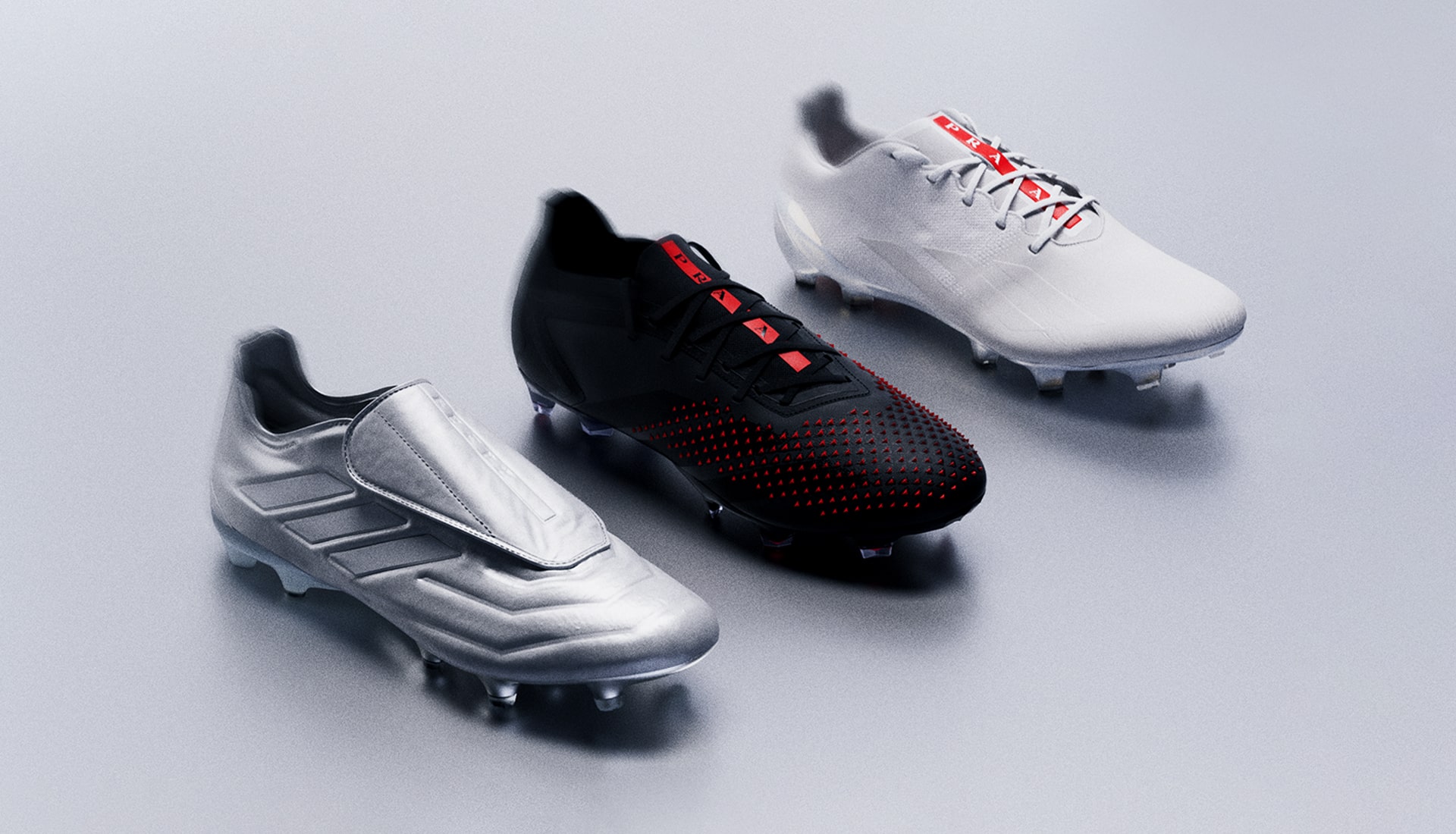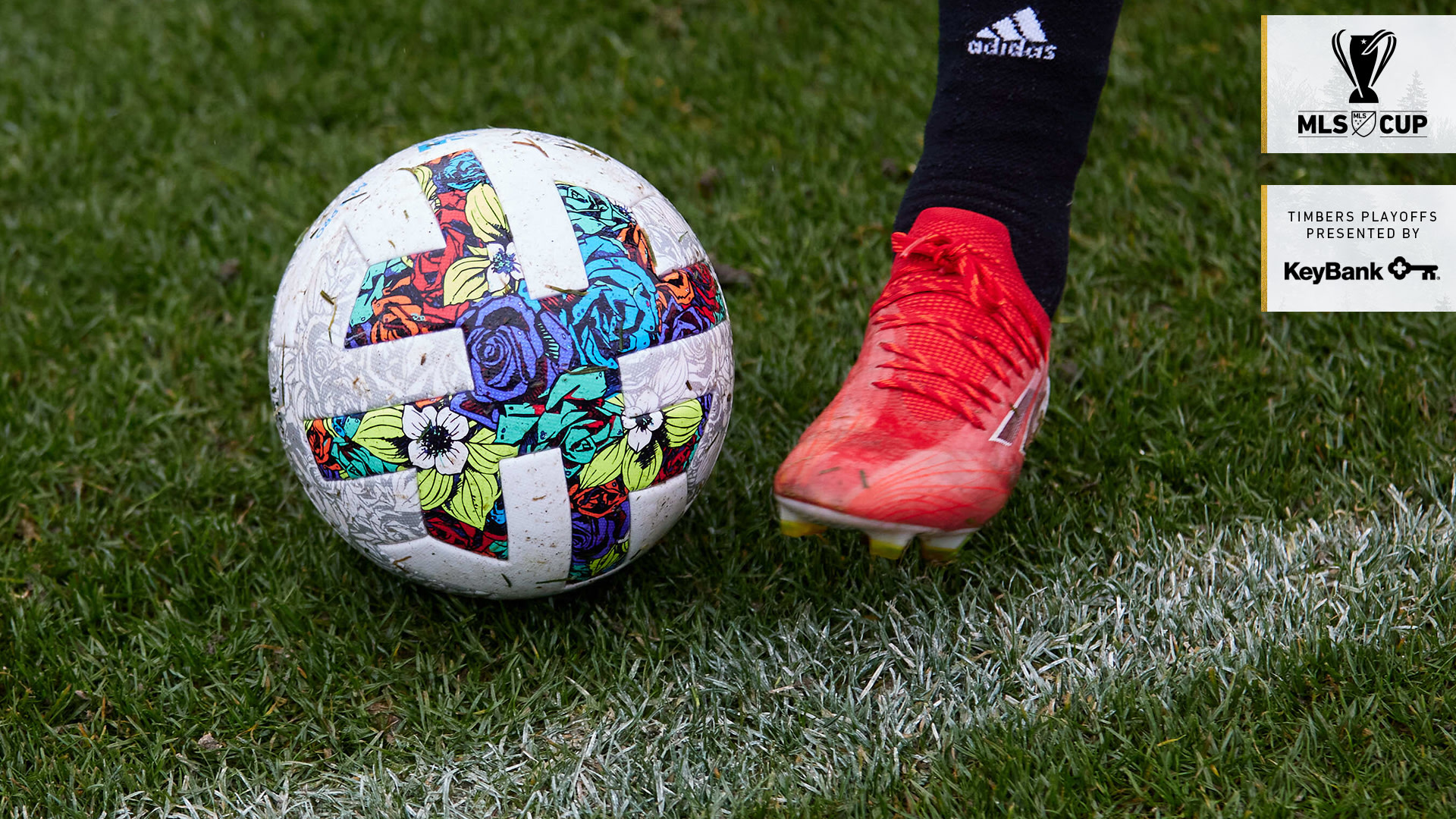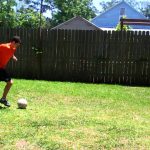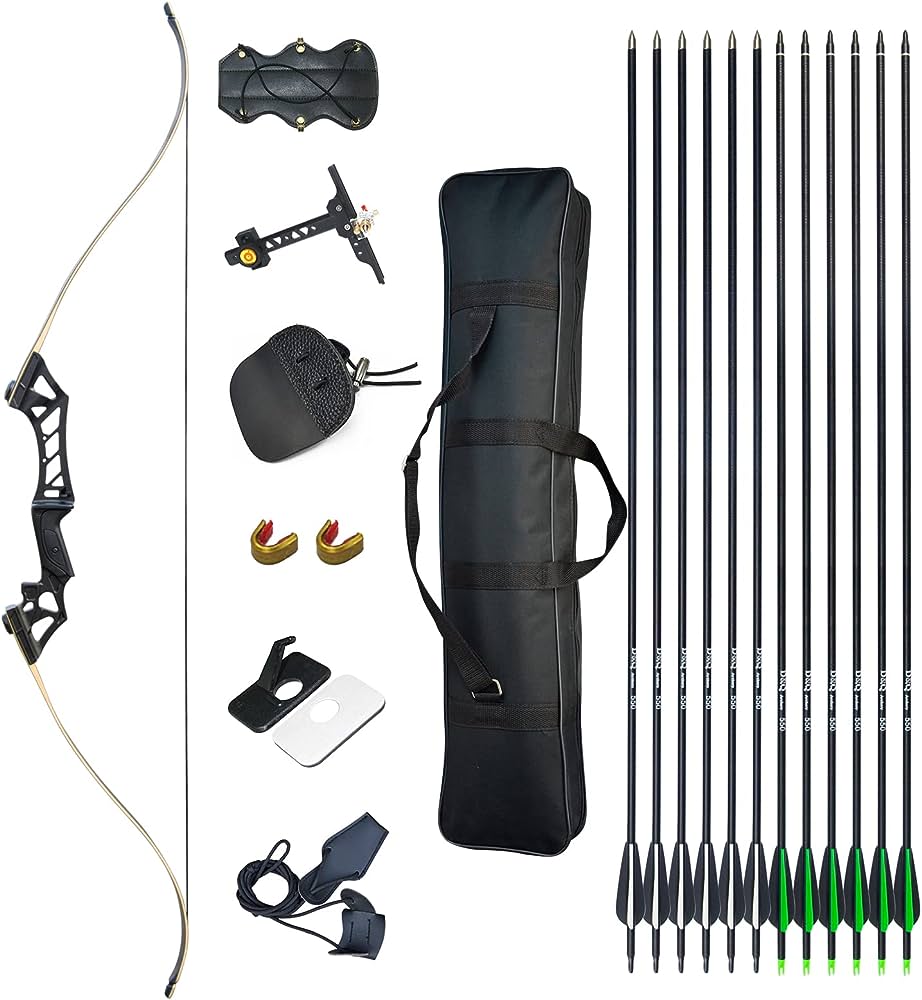Soccer cleats significantly impact performance by providing traction, stability, and control on the field. Choosing the right soccer cleats is crucial for optimizing performance on the field.
When players have the correct footwear, it can greatly affect their ability to maneuver, change direction, and maintain balance during matches. Soccer cleats are specially designed to provide traction on various field surfaces, such as grass, turf, or artificial grass.
The studs or spikes on the sole of the cleats dig into the ground, preventing slips and slides, and allowing players to make quick and precise movements. Moreover, soccer cleats offer stability by providing ankle support and preventing unnecessary twists or injuries. Furthermore, the construction and materials used in soccer cleats impact the ball control, allowing players to have better touch, accuracy, and power during passing, shooting, and dribbling. Overall, soccer cleats play a crucial role in enhancing a player’s performance and should be carefully chosen to match the player’s style, position, and playing conditions.
Understanding The Relationship Between Soccer Cleats And Performance
Soccer cleats have a significant impact on player performance, influencing factors such as agility, traction, and stability during gameplay. Choosing the right cleats can enhance a player’s speed, control, and overall effectiveness on the field. Understanding the relationship between the type of cleats and performance is crucial for soccer players seeking to optimize their game.
The Role Of Footwear In Soccer Performance
In the fast-paced and dynamic game of soccer, every player understands the vital role that footwear plays in their performance on the field. Soccer cleats, in particular, have been designed to enhance a player’s ability to maneuver swiftly, maintain balance, and maximize traction on different playing surfaces. With the right pair of cleats, players can have an added advantage in agility, speed, and overall performance. In this article, we will delve deeper into the relationship between soccer cleats and performance, exploring how these specialized shoes can significantly impact a player’s game.
Exploring The Influence Of Soccer Cleats On Player Performance
Soccer cleats are meticulously designed to optimize a player’s performance on the field by offering specific features tailored to the demands of the sport. These features can influence aspects such as acceleration, ball control, stability, and injury prevention. Let’s look at some important ways in which soccer cleats can affect a player’s performance:
Enhanced Traction: Cleats with carefully engineered studs provide proper traction on the playing surface, allowing players to change direction rapidly, make quick turns, and maintain excellent stability during high-speed movements.
Improved Ball Control: Cleats featuring textured upper or specialized materials enhance ball touch and control, allowing players to have a better feel for the ball, especially when dribbling, passing, or shooting.
Optimized Cushioning and Support: Soccer cleats with advanced cushioning systems provide comfort and support, reducing the risk of foot fatigue and injuries. This allows players to focus on their performance without discomfort or distractions.
Lightweight Construction: Cleats made from lightweight materials such as synthetic fibers reduce the overall weight on a player’s feet. This leads to increased agility and speed, enabling players to make sudden bursts of acceleration and maintain their pace throughout the game.
Adaptability to Playing Surface: Soccer cleats are designed to suit different playing conditions and surfaces, such as grass, turf, or indoor arenas. Each surface requires specific features, such as different stud configurations or sole plate designs, to optimize performance and minimize the risk of slipping or sliding.
Factors To Consider When Assessing The Impact Of Soccer Cleats
When evaluating the impact of soccer cleats on player performance, it is essential to consider several factors that can influence the effectiveness of the footwear:
Player Position: Different positions require varying types of cleats to optimize performance. For example, defenders might benefit from cleats that prioritize stability and protection, while attackers may prioritize speed and agility.
Playing Style: Styles of play can also affect the choice of soccer cleats. For example, quick and agile players may prefer low-profile cleats that promote quick movements, while power players may prefer cleats with additional traction and stability features.
Individual Fit: Proper fit is crucial for comfort and performance. Ill-fitting cleats can cause discomfort, blisters, or even impact a player’s movement, hindering their overall performance.
Playing Surface and Weather Conditions: Players need to select cleats suited to the specific playing surface conditions they encounter regularly. Cleats designed for firm ground may not provide optimal performance on turf or indoor surfaces.
Budget and Brand Preferences: While performance is paramount, players may also have individual budget constraints and brand preferences that influence their choice of soccer cleats.
The Science Behind Performance-enhancing Soccer Cleats
When it comes to optimizing performance on the soccer field, every advantage counts. And one key factor that can have a significant impact on a player’s performance is their choice of soccer cleats. Designed with specific features to enhance an athlete’s abilities, high-performance soccer cleats can make all the difference on the pitch.
Examining The Design Features Of High-performance Soccer Cleats
The design of high-performance soccer cleats is carefully crafted to provide athletes with superior performance. These cleats are equipped with various features that cater to different aspects of the game, allowing players to excel in their specific roles. Let’s take a closer look at some of these design features:
Anatomical Fit: High-performance soccer cleats are designed to provide a snug and comfortable fit. This not only enhances comfort but also ensures maximum control and precision while making quick movements on the field.
Lightweight Construction: Weight is a crucial factor in soccer cleat design. By utilizing lightweight materials and advanced construction techniques, high-performance cleats offer players increased agility and speed, allowing them to maneuver swiftly and react quickly to changing game situations.
Enhanced Durability: Soccer cleats endure significant wear and tear throughout a game. High-performance cleats are designed with durable materials that can withstand rigorous playing conditions, ensuring longevity and performance consistency.
Padding and Support: To minimize the risk of injuries, high-performance soccer cleats incorporate ample padding and support in key areas. This helps protect the player’s feet and ankles, reducing the chances of strains or sprains.
Materials Matter: The Role Of Cleat Construction
The materials used in the construction of soccer cleats play a crucial role in determining their performance. Manufacturers employ a variety of materials, each offering unique benefits for players. Here are some common materials used in high-performance soccer cleats:
Leather: Traditionally used in soccer cleats, leather provides excellent durability and flexibility. It molds to the foot, offering a snug fit and great control over the ball.
Synthetic: Synthetic materials have gained popularity in recent years due to their lightweight nature and water-resistance. They offer increased speed and maneuverability on the field.
Mesh: Cleats with mesh uppers provide exceptional breathability, keeping the feet cool and dry during intense gameplay. This helps prevent discomfort and blisters.
Stud Patterns And Traction: How They Affect Performance
One of the most critical aspects of a soccer cleat’s design is its stud patterns and traction capabilities. The studs, strategically placed on the outsole of the cleat, determine the player’s grip and stability on the field, directly impacting their performance. Different stud patterns cater to varying field conditions. Here are some common stud patterns:
| Stud Pattern | Terrain/Field Conditions |
|---|---|
| Firm Ground (FG) | Regular grass, dry fields, natural turf |
| Soft Ground (SG) | Wet, muddy fields |
| Artificial Turf (AG) | Man-made turf surfaces |
| Indoor (IN) | Indoor courts, hard surfaces |
By providing optimal traction, high-performance soccer cleats allow players to make quick turns, accelerate rapidly, and maintain stability, thereby enhancing their overall performance.
Performance Impact Of Different Soccer Cleat Types
Different soccer cleat types can have a significant impact on overall performance, affecting speed, traction, and stability on the field. The choice of cleats can greatly influence a player’s ability to maneuver and perform at their best during a game.
When it comes to soccer, the right pair of cleats can make all the difference in a player’s performance. Although it may seem like a small detail, the type of cleats a player wears can greatly impact their ability to maneuver on the field, maintain balance, and optimize movement. Understanding the performance impact of different soccer cleat types is crucial for players looking to enhance their skills and maximize their potential on the pitch.
Molded Cleats Vs. Detachable Cleats: A Comparative Analysis
One key aspect to consider when choosing soccer cleats is the type of studs or cleats on the sole. Molded cleats, as the name suggests, have permanently attached studs that are typically made of rubber or hard plastic. On the other hand, detachable cleats feature studs that can be removed and replaced depending on the playing surface and conditions.
Firm Ground Cleats: Enhancing Performance On Natural Grass
Artificial Ground Cleats: Optimizing Movement On Synthetic Turf
Soft Ground Cleats: Tackling Challenging Pitch Conditions
Turf And Indoor Cleats: Navigating Non-grass Surfaces

Credit: www.soccerbible.com
Considerations When Choosing Soccer Cleats For Performance
Choosing the right pair of soccer cleats can make a significant difference in your performance on the field. From player position and playing style to the playing environment and comfort factor, several factors need to be considered when selecting the perfect soccer cleats. In this article, we will delve into the key considerations that should be taken into account to ensure optimal performance and safety. Let’s dive in!
1. Player Position And Playing Style: Matching Cleats To Player Needs
Player position and playing style are fundamental factors that should be considered when choosing soccer cleats. Different positions and styles require different features and functionalities from the cleats. For instance, forwards and attacking players who rely on quick bursts of speed and sharp changes in direction would benefit from cleats with a lightweight construction, enhanced traction, and a narrow profile to provide optimal agility on the field.
On the other hand, midfielders and playmakers who often engage in intense physical battles and require excellent ball control might prefer cleats with added cushioning, superior grip, and a wider design to offer enhanced stability and support.
Defenders, whose primary role is to protect their goal, require cleats that offer maximum protection and durability. Cleats with reinforced toe areas, sturdy construction, and exceptional grip would be ideal for defenders as they tackle opponents and make crucial interceptions.
2. Playing Environment: Selecting The Right Cleats For Different Conditions
The playing environment also plays a crucial role in cleat selection. Different conditions, such as firm ground, soft ground, turf, or indoor surfaces, require specialized cleats to optimize performance and reduce the risk of injuries.
For firm ground surfaces, cleats with molded studs provide excellent traction and stability. They are designed to withstand the rigors of natural grass fields.
Alternatively, soft ground surfaces, including wet or muddy terrain, call for cleats with replaceable studs. These cleats offer better grip and prevent players from losing their footing on slippery surfaces.
Turf-specific cleats are specifically designed for artificial turf surfaces. They feature shorter rubber or synthetic studs that offer excellent grip and prevent excessive traction.
Indoor soccer requires cleats with a flat sole, also known as turf shoes. These shoes provide the right amount of traction and maneuverability on the flat indoor playing surface, ensuring swift movement and quick turns.
3. Comfort And Fit: Ensuring Maximum Performance And Safety
Comfort and fit are paramount when it comes to soccer cleats. Ill-fitting cleats can lead to discomfort, blisters, and even injuries. It is crucial to prioritize a proper fit to ensure optimal performance and reduced risk of injuries.
When choosing soccer cleats, consider the shape and width of your feet. Cleats should provide a snug fit without feeling overly tight or constricting. Look for cleats that offer ample cushioning, breathable materials, and customizable lacing systems to achieve a comfortable and secure fit.
Moreover, it is essential to try on different cleats and walk around in them to assess their comfort and fit. Remember, your comfort on the field directly impacts your performance, so investing in well-fitting cleats is crucial.
4. Durability: Evaluating Longevity And Performance Retention
Durability is another crucial consideration when choosing soccer cleats. You want cleats that can withstand the demands of the game and maintain their performance over time.
Factors such as the quality of materials used, reinforced stitching, and durable outsoles contribute to the longevity of soccer cleats. Look for cleats that are built to endure the intense rigors of the game, providing long-lasting performance and value for your investment.
5. Maintaining And Caring For Soccer Cleats
Proper maintenance and care play a significant role in prolonging the life of your soccer cleats. Regular, but gentle, cleaning using a mild soap and water solution can help remove dirt and maintain their appearance. Avoid using harsh chemicals or submerging the cleats in water for an extended period, as these may damage the integrity of the materials.
After each game or training session, ensure that you remove any debris stuck in the studs or outsole. This prevents excessive wear and tear and maintains the traction and performance of the cleats.
Additionally, storing cleats in a cool and dry place, away from direct sunlight, helps maintain their shape and prevents deterioration. Proper care and maintenance can significantly extend the lifespan of your soccer cleats, ensuring continued performance and safety on the field.
Understanding The Psychological Impact Of Soccer Cleats On Performance
Soccer is a sport that is not only physically demanding but also requires mental agility and sharp focus. While most players understand the importance of physical training and technique, the impact of soccer cleats on performance goes beyond the physical aspects. In fact, the psychological influence of wearing the right cleats can have a significant effect on a player’s confidence, perception, and self-belief, ultimately shaping their mindset on the field. In this blog post, we delve into the psychological impact of soccer cleats to shed light on how they can enhance a player’s performance.
Confidence Boost: The Psychological Influence Of Wearing The Right Cleats
When it comes to sports, confidence plays a crucial role in an athlete’s performance, and soccer is no exception. Wearing the right cleats can provide players with a confidence boost that can significantly enhance their gameplay. Whether it’s the design, color, or even the brand, the appearance of soccer cleats can create a sense of pride and identity for the player. In addition, when the cleats feel comfortable and offer optimal support, players have more confidence in their physical abilities, allowing them to perform their best.
The Role Of Perception And Self-belief In Performance
In soccer, perception and self-belief are essential factors that can shape a player’s performance. Soccer cleats can influence perception by altering the sensory feedback received by players through their feet. For instance, cleats with a firm grip on the ground can provide players with more stability and control, leading to a heightened sense of confidence. On the other hand, cleats that promote agility and quick movements can give players a perception of enhanced speed and agility, boosting their self-belief on the field. The way players perceive themselves and their capabilities can greatly impact their performance, making soccer cleats a crucial element that shapes their mindset.
Developing A Winning Mindset: Harnessing The Power Of Cleats
Winning starts in the mind, and soccer cleats play a role in shaping a player’s mindset. When players wear cleats that are designed for their specific position or playing style, it reinforces their sense of purpose and specialization. This specialization sends a strong message to the player’s subconscious mind that they are well-prepared and equipped to excel in their role. The right cleats can serve as a powerful tool to develop a winning mindset, boosting motivation, focus, and determination. With the right mindset, players can tap into their full potential and perform at their best, giving them a competitive edge on the field.
Frequently Asked Questions Of Do Soccer Cleats Affect Performance
Do Different Soccer Cleats Make A Difference?
Yes, different soccer cleats do make a difference as they offer various features and benefits such as traction, stability, and comfort, which can impact performance and reduce the risk of injuries. Choosing the right cleat for your playing style is crucial for optimal performance on the field.
Do Soccer Cleats Make You Run Faster?
Yes, soccer cleats can help you run faster by providing better traction and grip on the field. The design and materials of soccer cleats allow for improved acceleration and agility, enabling you to move quickly and efficiently.
Do Soccer Cleats Help You Kick Better?
Yes, soccer cleats can help improve your kicking ability. They provide traction and stability on the field, enabling better control and power when striking the ball. Cleats are designed to enhance grip and prevent slipping, allowing you to generate more force and accuracy in your kicks.
Why Do Cleats Make You Faster?
Cleats enhance speed by providing better traction and grip on the playing surface, allowing you to push off the ground with more force. This increased power translates into faster acceleration and overall speed during sports activities.
Conclusion
To sum up, the impact of soccer cleats on performance cannot be underestimated. The right pair of cleats can enhance a player’s speed, agility, and overall control on the field. Factors like fit, traction, and design play a crucial role in determining the effectiveness of cleats.
Athletes must consider their playing style, field conditions, and personal preferences when selecting soccer cleats. In this ever-competitive sport, investing in quality footwear can make a noticeable difference in one’s game. So, choose wisely and elevate your performance on the pitch.

General Manager & Auditorial Head.
Killian Jake is a World Sports Traveler and hobbyist sports lover. By exploring different sorts of playing modules like indoor, outdoor, and many more. As for professionalism and writing, it’s helpful to give you the right suggestions on different games and sports.





